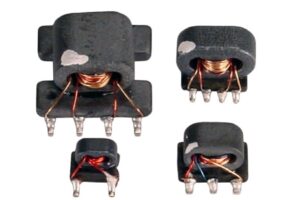A transformer is an electrical component composed of two or more wire coils that transmit and convert electrical energy through electromagnetic induction. Transformers can increase or decrease electrical voltage by transferring energy from an input coil (known as the primary winding) to one or more outputs (secondary windings). These windings consist of a magnetic core…

What Is the Difference Between a Balun and RF Transformer?
Baluns and RF transformers are two distinct types of transformers – while they share similarities, they have many key differences in terms of operational functions and characteristics. In this blog, we’ll overview these two transformer types and their distinctions. Balun Transformers Balun transformers are used to convert an unbalanced signal to a balanced signal and…
Switch Mode Power Supply Transformers FAQ
MPS Industries is a U.S.-based magnetic components manufacturer specializing in the design of custom transformers, inductors, common mode chokes, current sensors and many other custom magnetics. Switch mode power supply (SMPS) transformers use different switching topologies, transferring the required power from input to output in the electronic systems. Here, we have answered some of the…
What is a Toroidal Power Transformer?
Transformers are electrical devices that rely on electromagnetic induction to transfer energy from one circuit to another. Among the most common types of transformers are power transformers, which are generally used in electrical systems to step up (i.e., increase) or step down (i.e., decrease) voltage levels between circuits. These transformers are available in several variations,…
Exploring Balun Transformers
In the world of electronics, it’s common to hear about two varieties of lines—balanced and unbalanced. Balanced lines have two conductors, which feature equal currents running in opposite directions. An example of balanced lines is twisted pair cables. On the other hand, unbalanced lines feature just one conductor and a ground, like a coaxial cable….
Understanding Power Transformers
Transformers convert an AC system’s electrical power at one current or voltage into electrical power at a different current or voltage without using rotating parts. power transformers provide this critical function as components of electrical and electronic circuits. Besides the common application of stepping voltages up or down, these magnetic components can also be used…